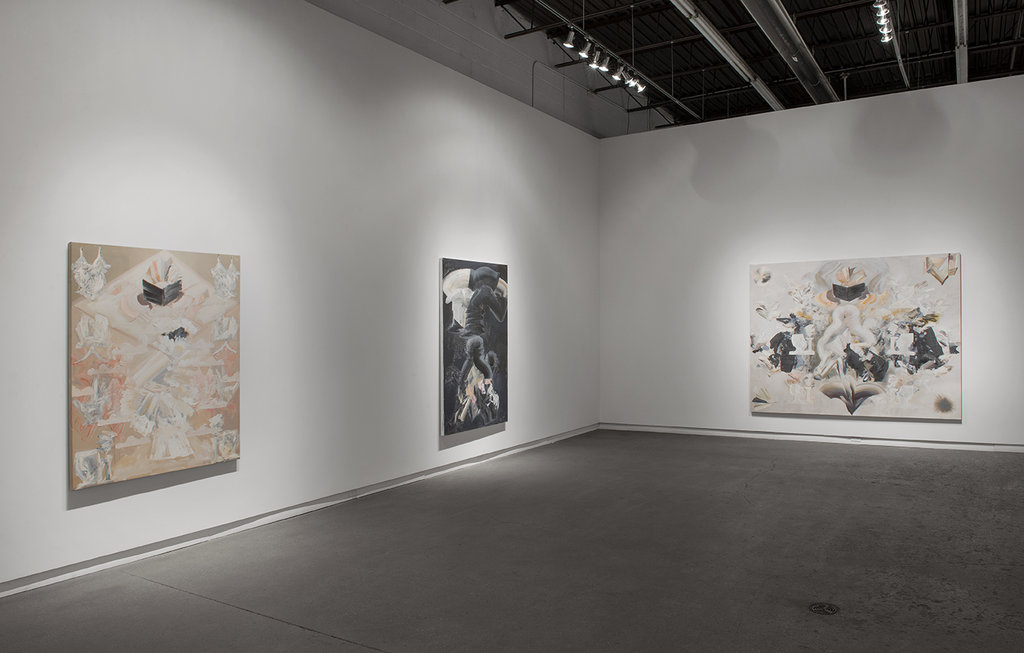 Installation View of Kristine Moran: Affairs and Ceremonies at Daniel Faria Gallery, 2014. Courtesy of Daniel Faria Gallery
Installation View of Kristine Moran: Affairs and Ceremonies at Daniel Faria Gallery, 2014. Courtesy of Daniel Faria Gallery
Every ritual can reserve a certain sense of spirituality, varying from religious practices to more secular interactions and routines. On the surface, the disparity between the two seems to favor the pious ceremonies for being more obligatory and consecrated, but the opposite interpretation can occur when considered on a more personal level. Funerals and marriages, séances and love affairs, can all be considered transcendent experiences to a person, regardless of how others prioritize them. Moran’s exhibition, Affairs and Ceremonies, concerns the mystical connotations behind such events, abstracting them with largely-gestural brushstrokes and cryptic symbols to allude to their emotional impact while distorting the meaning. The subject matter, and therefore the inherent interpretation, remains essentially ambiguous in her large-scale paintings, becoming visual riddles to be deciphered.
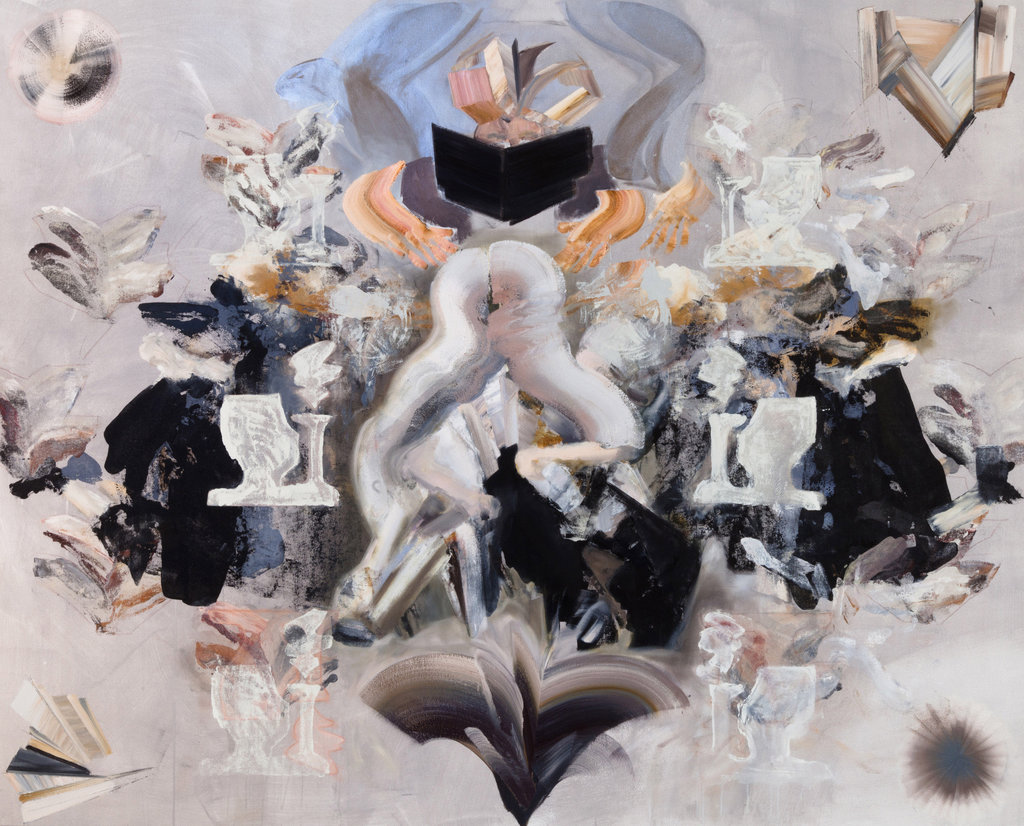 Kristine Moran, “Funeral Procession”, 2014, oil on canvas, 78″ x 94″. Courtesy of Daniel Faria Gallery
Kristine Moran, “Funeral Procession”, 2014, oil on canvas, 78″ x 94″. Courtesy of Daniel Faria Gallery
Moran’s work employs a variety of historical and modern artistic influences. As contemporary artist Anna Schachte describes, the works utilize the sharp light-and-dark contrasts (otherwise known as chiaroscuro) and “voluptuous forms” of the Baroque period combined with the bold, gestural layering of paint associated with the Abstract Expressionist movement. Furthermore, Moran shares the compositional organization of the Swiss abstract artist, Hilna af Klint, and the repetitive imagery of Jasper Johns. The combination of these aesthetic influences cloaks the narrative of these works behind her own set of symbols and characters.
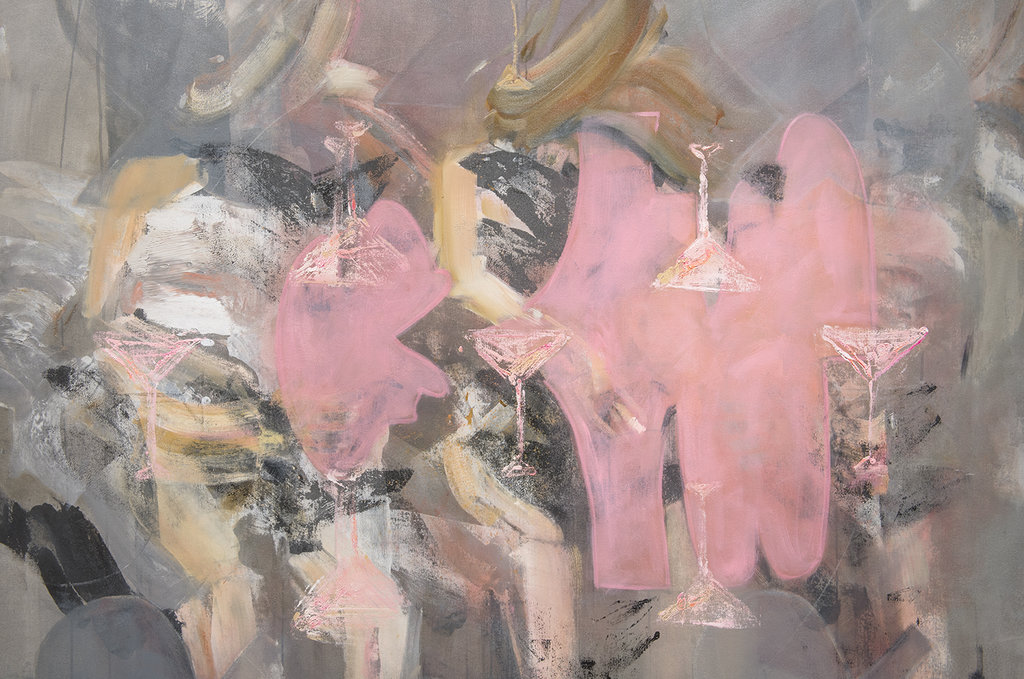 Kristine Moran, “Affair”, 2014, detail. Courtesy of Daniel Faria Gallery
Kristine Moran, “Affair”, 2014, detail. Courtesy of Daniel Faria Gallery
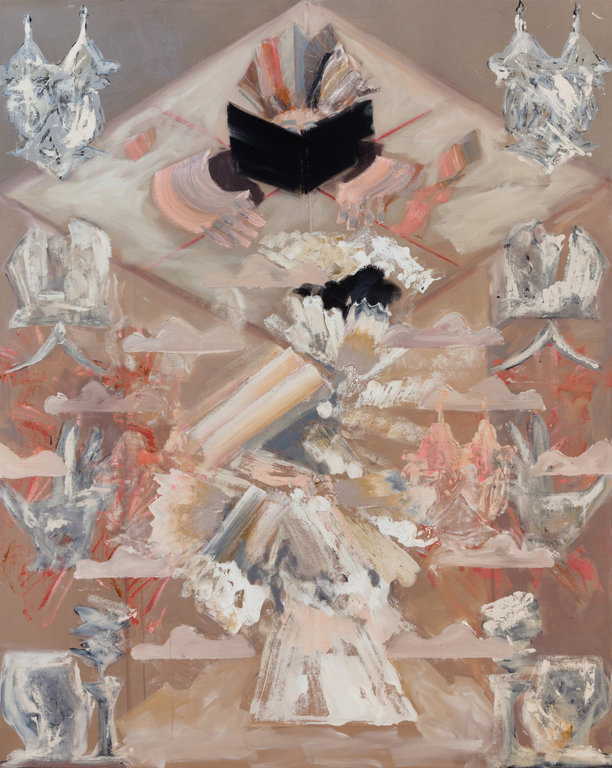 Kristine Moran, “Mistaken Bride”, 2014, oil on canvas, 60″ x 48″. Courtesy of Daniel Faria Gallery
Kristine Moran, “Mistaken Bride”, 2014, oil on canvas, 60″ x 48″. Courtesy of Daniel Faria Gallery
With respect to Jasper Johns’ influence, certain images, that are either painted freehand or directly translated from a template, reoccur throughout Moran’s works. For the most part, they share in the abstract nature of her style with only subtle references to what they actually represent. For example, one of her most commonly-used symbols – seen in her works “Mistaken Bride”, “Empty Receptacle 1”, and “Séance” – seems to resemble a chandelier or candelabra, an object usually often associated with mysticism and ritualism. However, its actual purpose appropriates itself with the entirety of its respective work. In the “Mistaken Bride”, the image is repeated twice, flanking the figure holding the darkened book and wearing the large headpiece, thus suggesting the presence of an altar and consequently a priest. Whereas, in “Séance”, the same image looms over the central figure as would most likely be the arrangement when the medium contacts lingering spirits. The image not only serves as a visual cue or encrypted diagram hinting to the work’s actual meaning, but also as a display of the relationship between the subject matter. The juxtaposition between these ceremonies, one associated with strict religious doctrine and the other considered to be a superstitious practice of the occult, is recognized but is still interconnected through Moran’s symbols and their encoded semiotics.
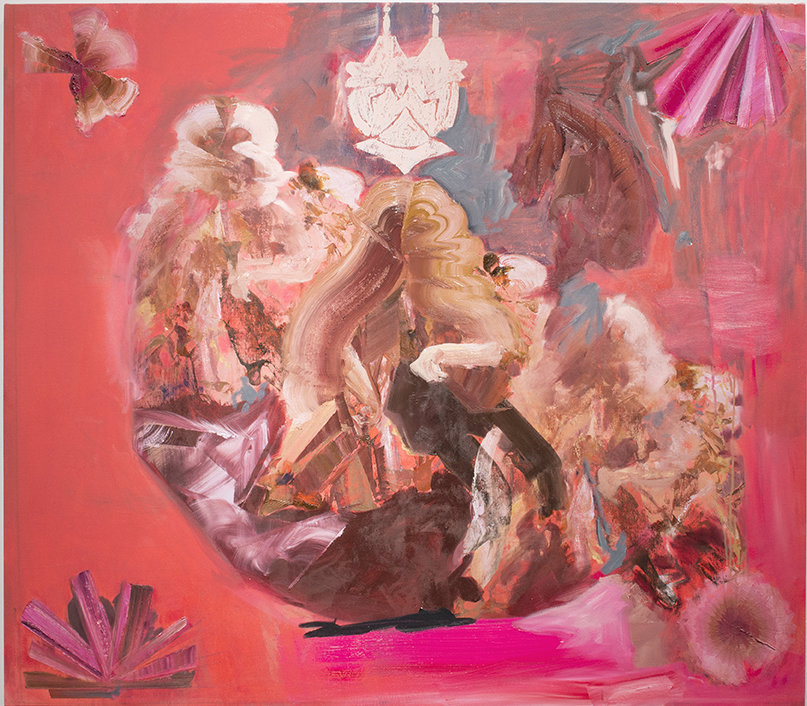 Kristine Moran, “Seance”, 2014, flashe, oil on canvas, 54″ x 60″. Courtesy of Daniel Faria Gallery
Kristine Moran, “Seance”, 2014, flashe, oil on canvas, 54″ x 60″. Courtesy of Daniel Faria Gallery
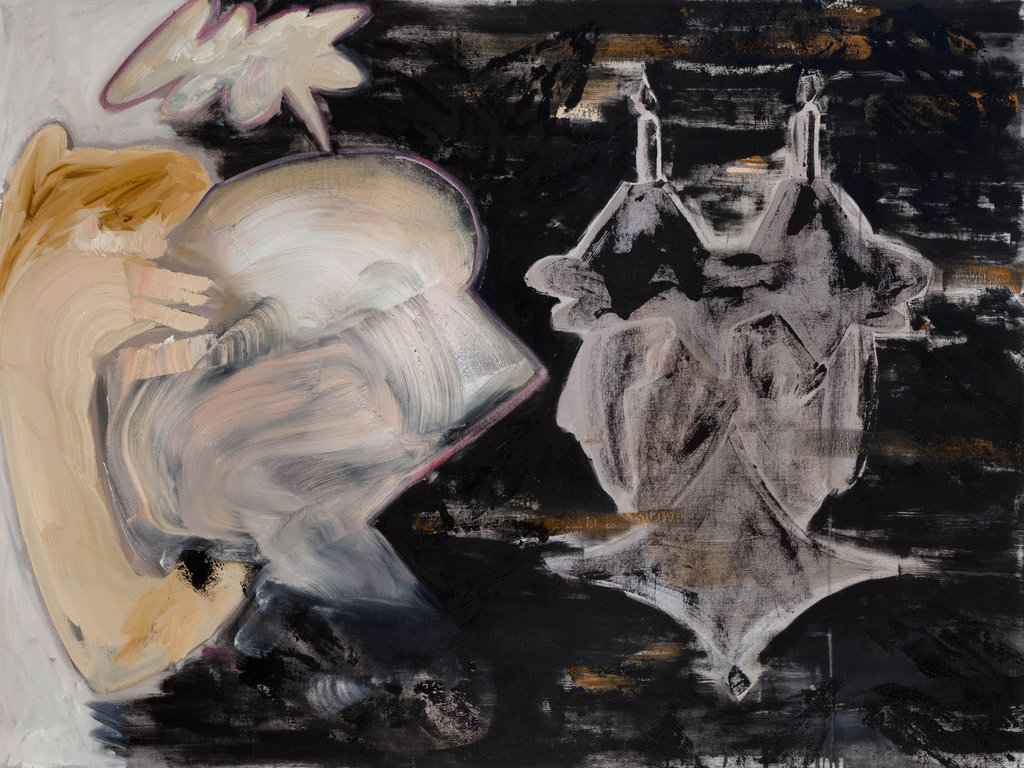 Kristine Moran, “Empty Receptacle”, 2014, flashe, oil on canvas, 36″ x 48″. Courtesy of Daniel Faria Gallery
Kristine Moran, “Empty Receptacle”, 2014, flashe, oil on canvas, 36″ x 48″. Courtesy of Daniel Faria Gallery
Yet, much like any good riddle, its true meaning cannot rely on solely one factor; rather one discovery leads to another and the same pattern continues until the true answer is found. The symbols are simply serve as another clue to determine the subject hinted by the title of the work. There is still much to consider, and Moran’s mysteries are not so simple to deconstruct and solve, like the meanings behind religious texts or Tarot cards for instance. Understanding the significance and spirituality of Moran’s works requires a deeper examination of its constituents as well as its entirety as a composition. Most part of the exhibition is looking past the objective into subjects that mere language cannot simply pronounce.
Simon Termine
*Exhibition information: November 13, 2014 – January 10, 2015, Daniel Faria Gallery, 188 St Helens Avenue, Toronto. Gallery hours: Tue – Fri 11 – 6, Sat, 10 – 6 p.m. The Gallery is closed from December 21, 2014 – January 5, 2015.
